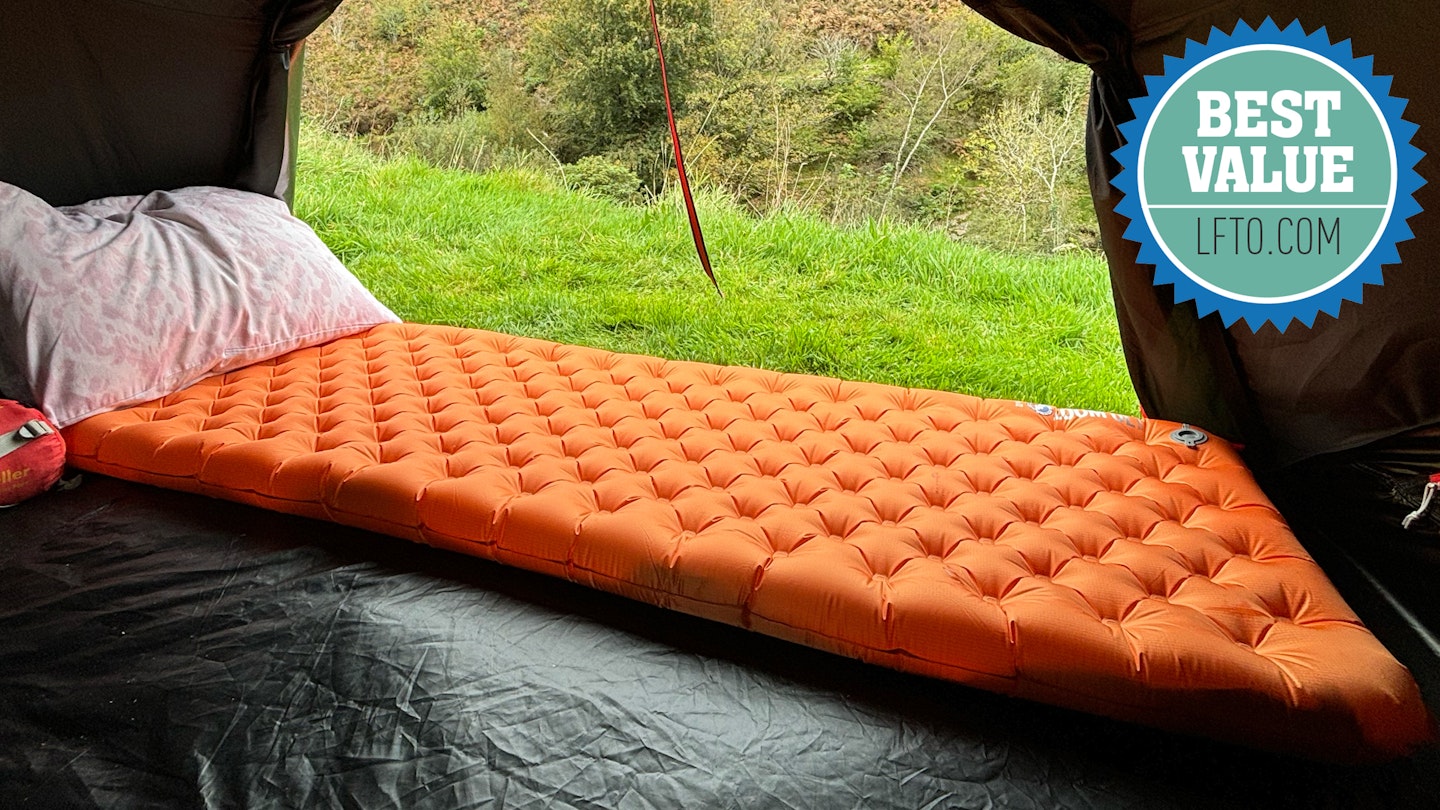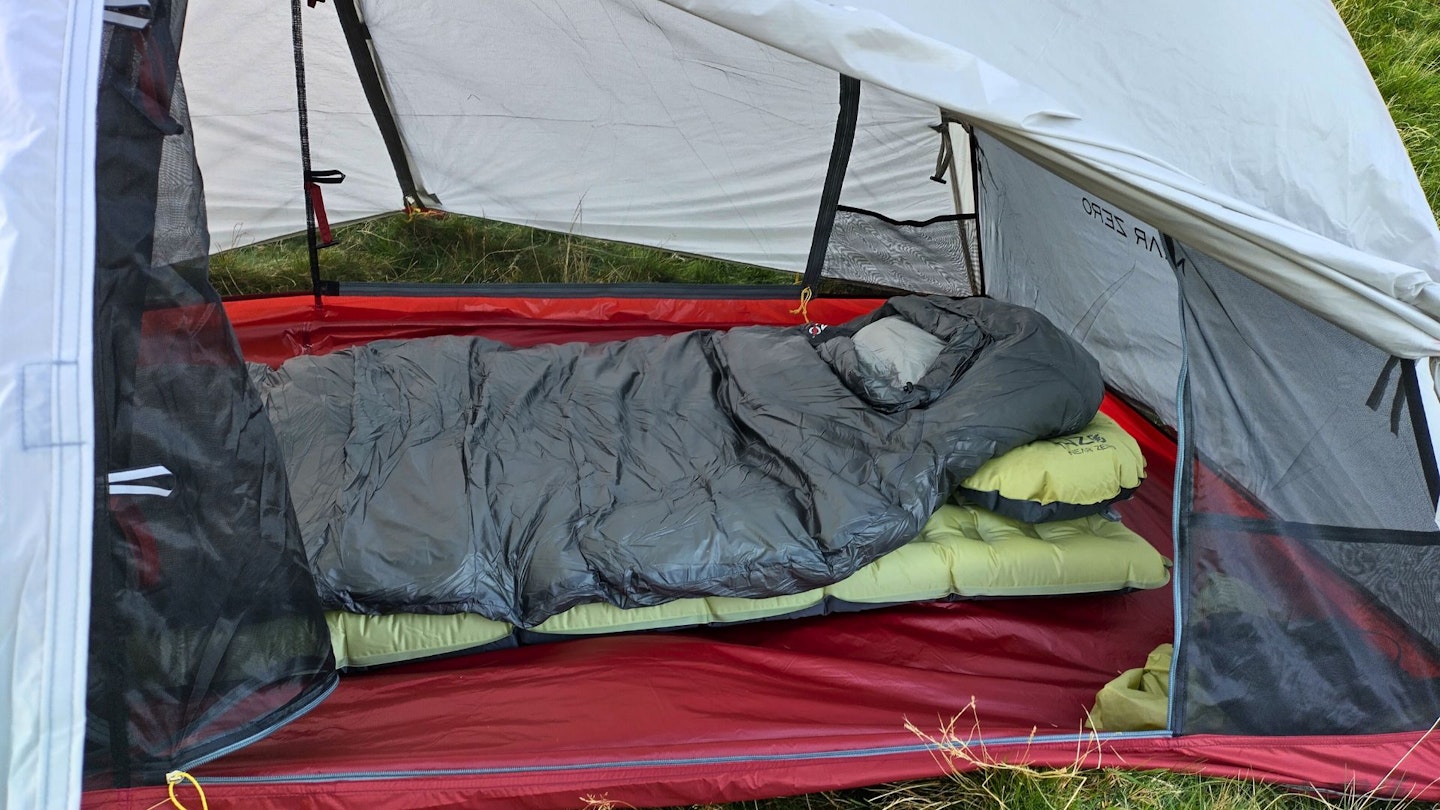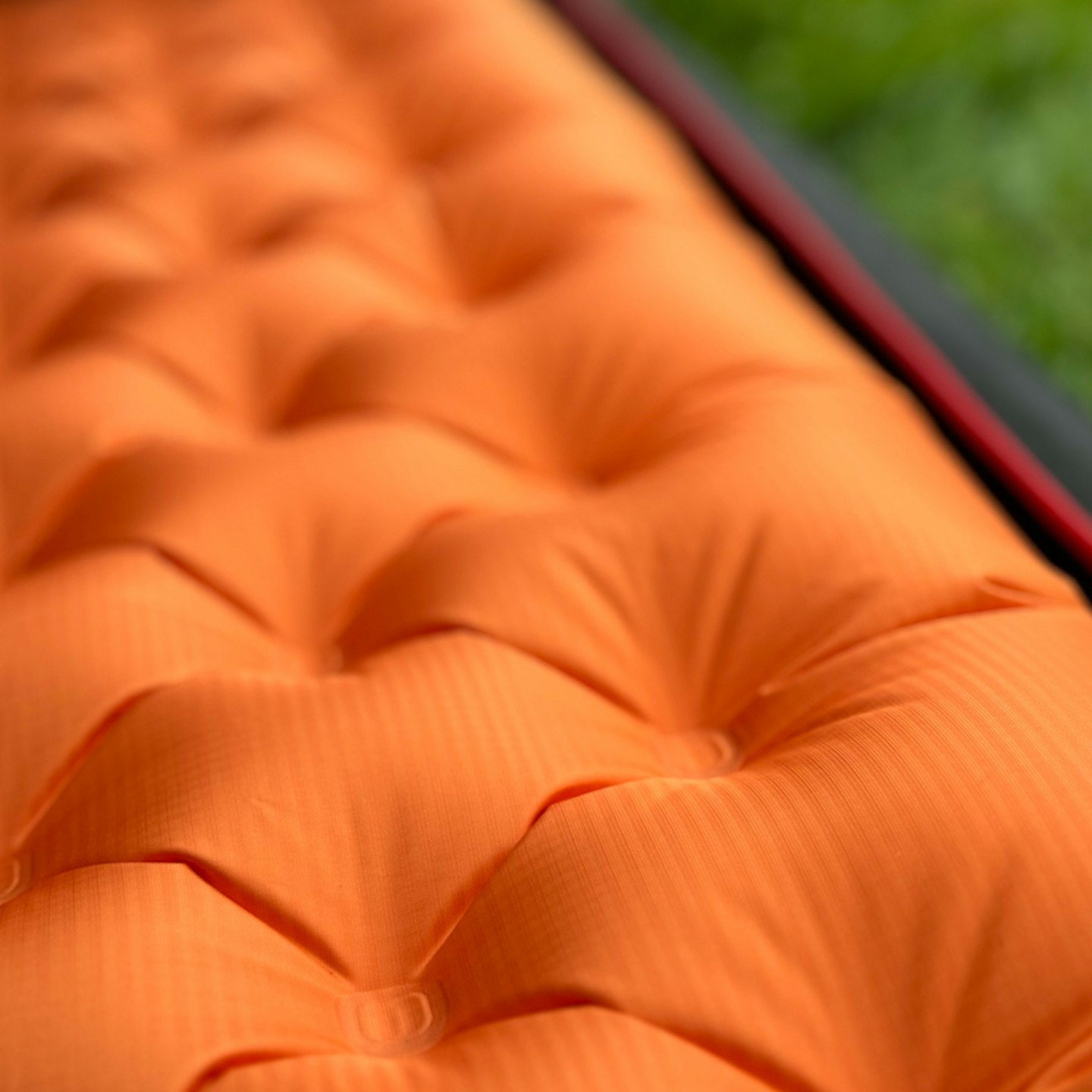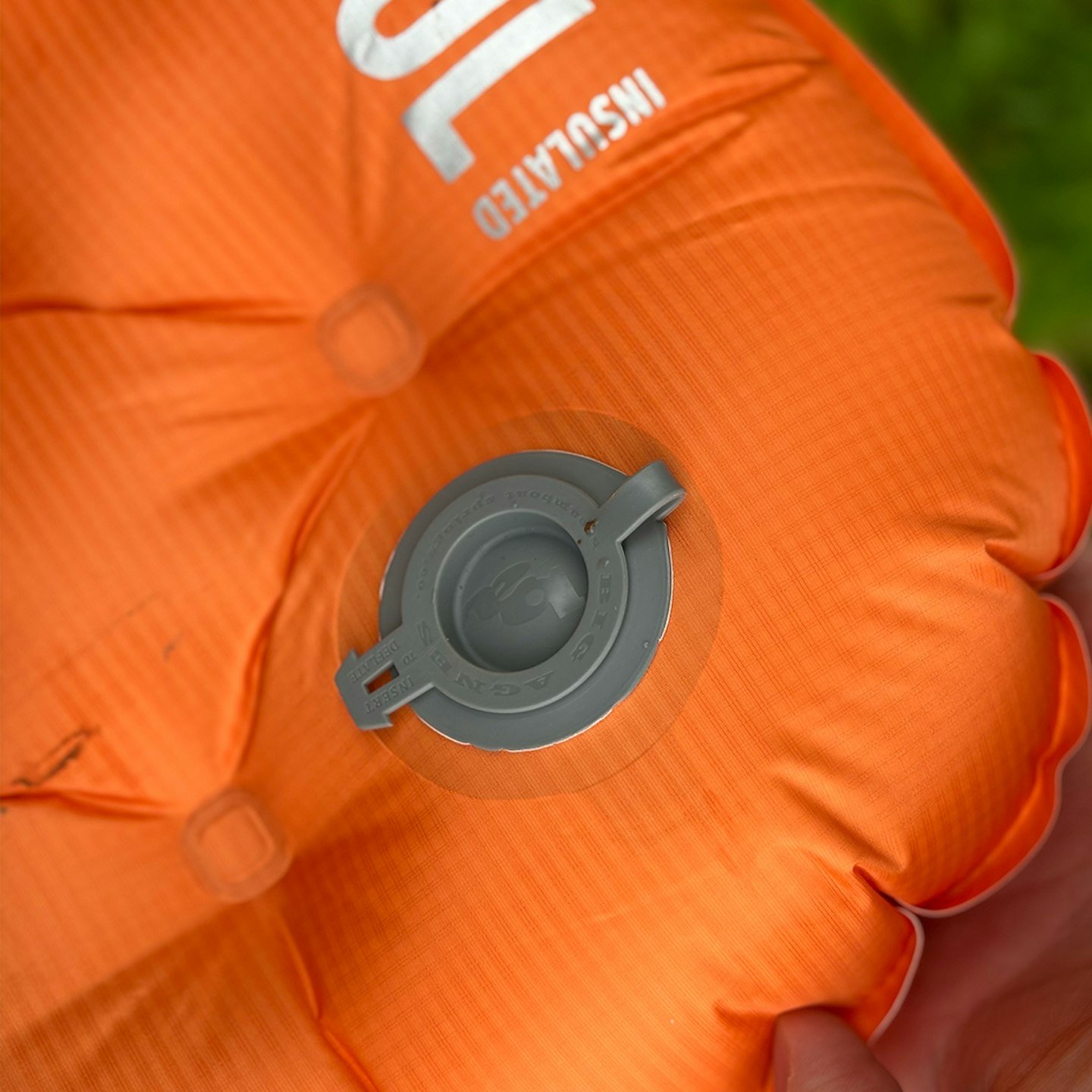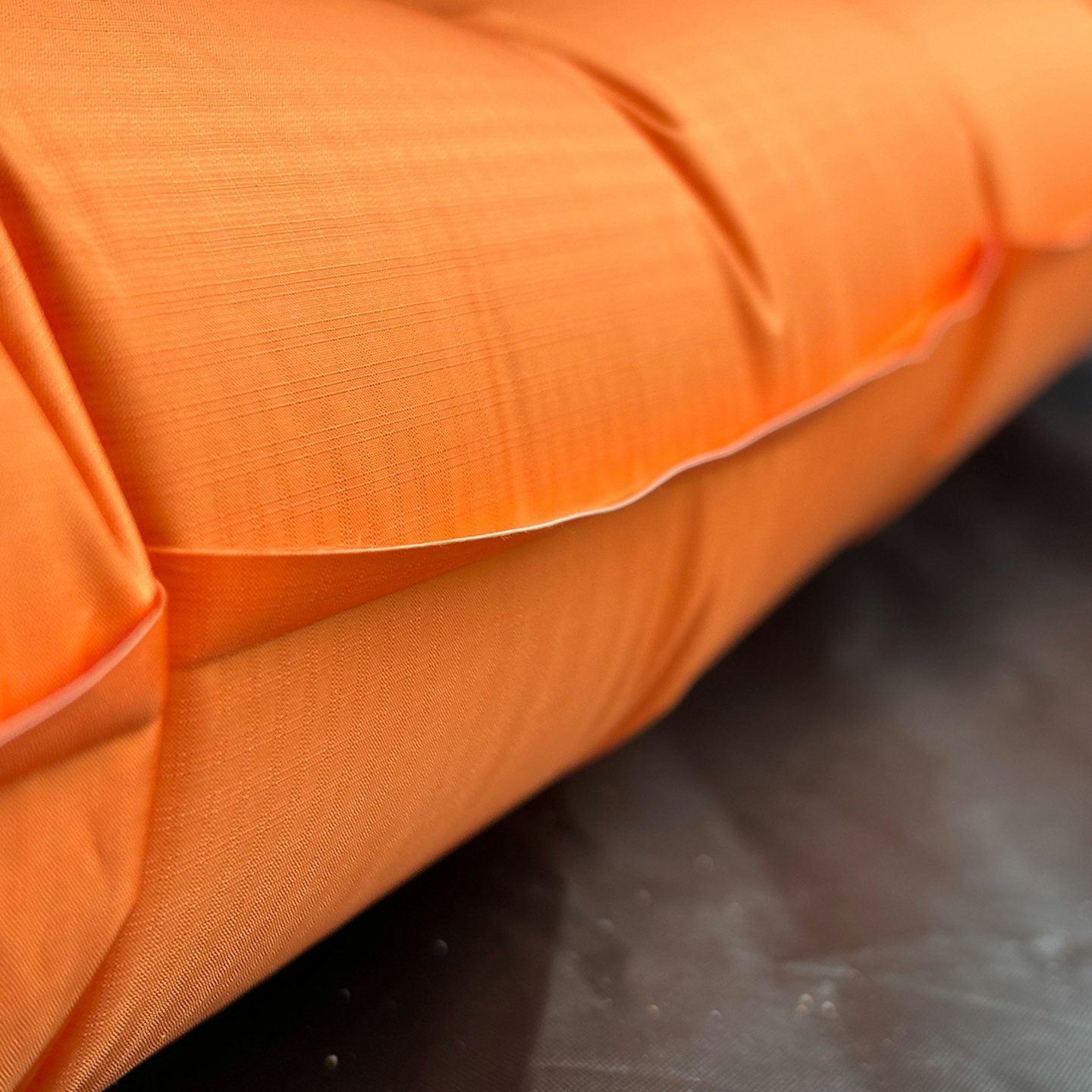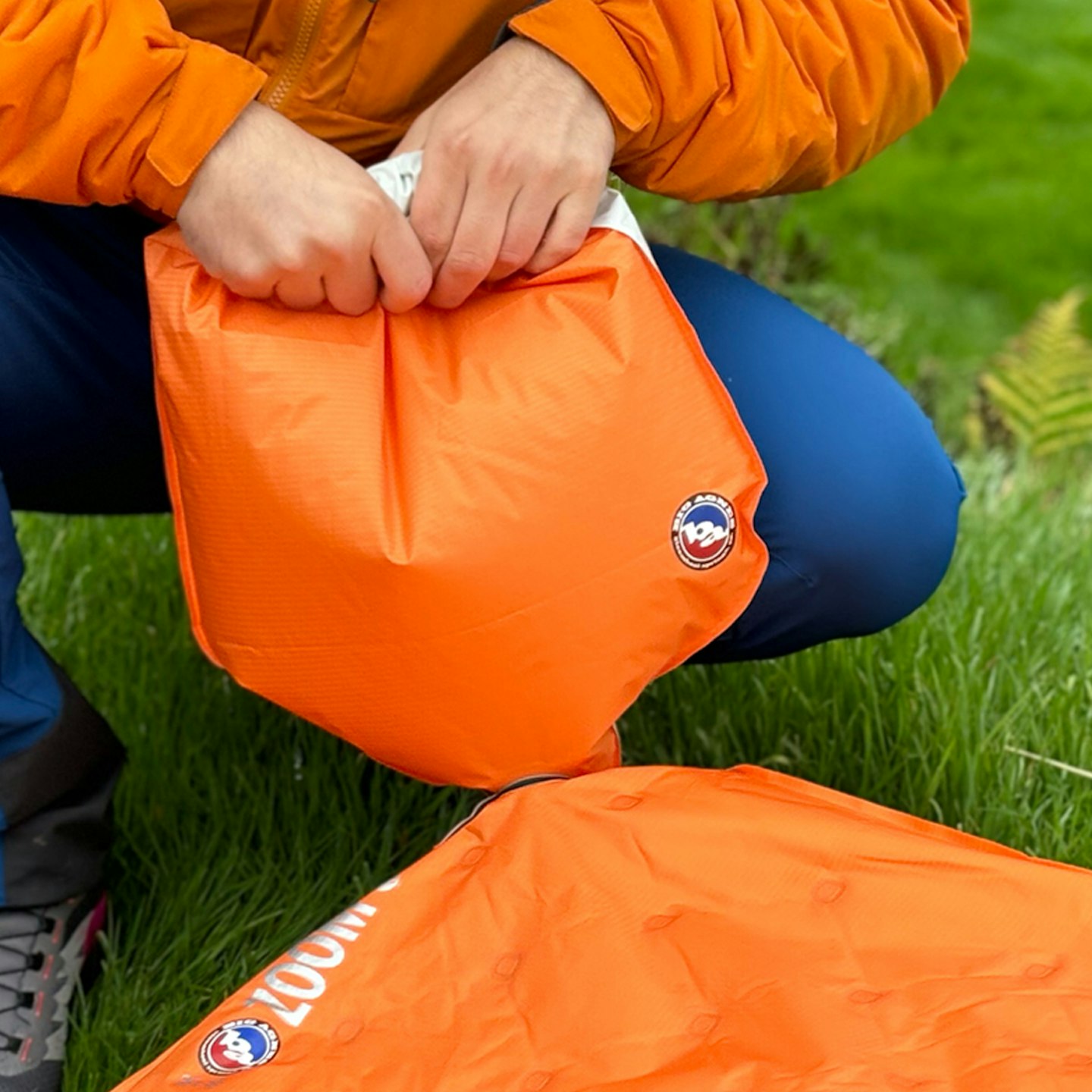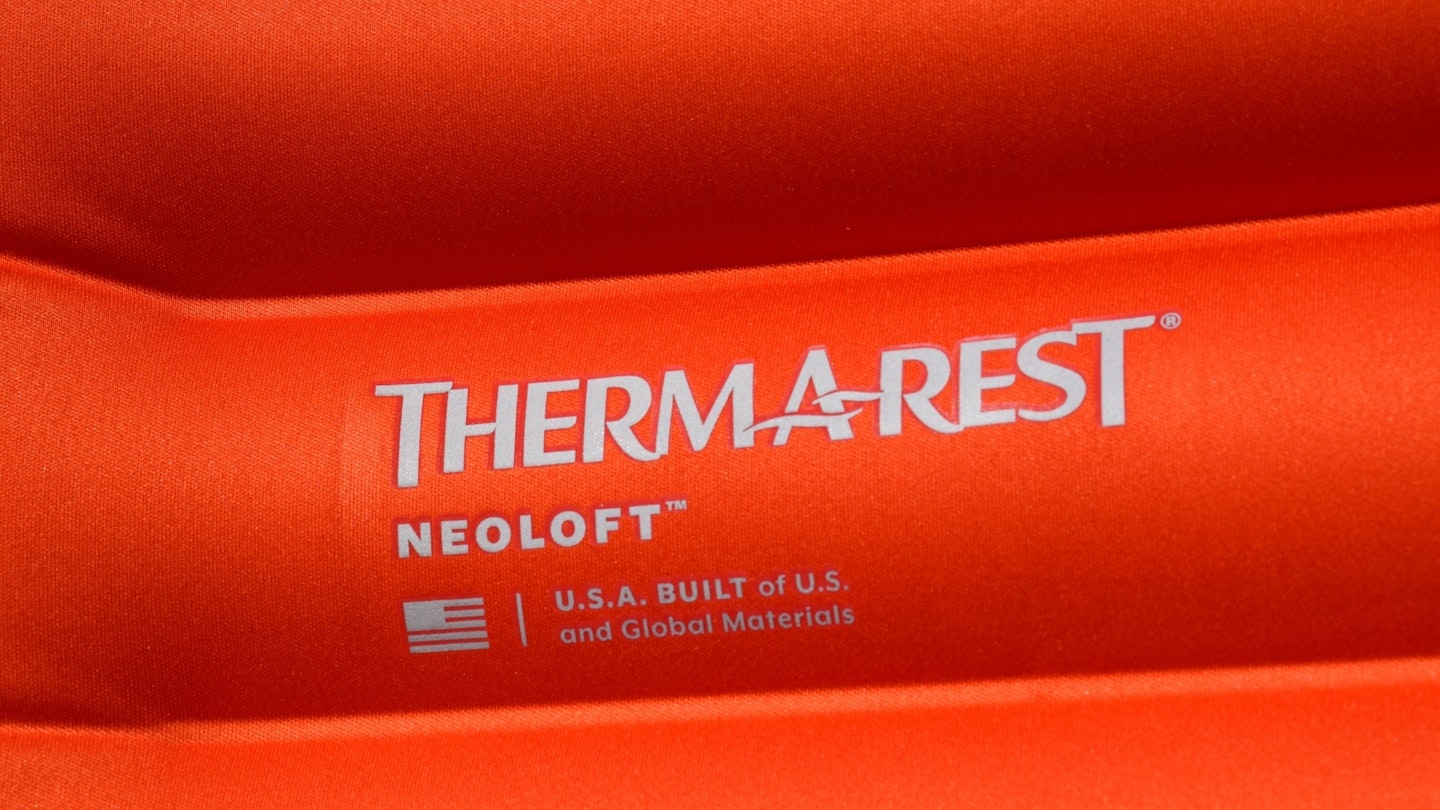Rookie campers may think that sleeping pads are all pretty much the same – but in fact they vary enormously. From simple foam rollout mats to highly engineered insulated options for trekking in winter, sleeping pads are as varied in style and price as coats, tents and boots.
Arguably, your sleeping pad is one of the most important things to get right in your camping kit. Before you start getting into portable coffee makers and foldable solar panels, your sleep setup comes first, and a good pad is as important as a good sleeping bag.
It immensely improves your comfort and insulates your sleeping body from the cold ground. Not to mention, aesthetically, a nice mat can really tie the whole room – or tent – together.

When buying a sleeping pad, you need to consider your body, your sleeping habits, and of course, your budget. Like every area of outdoor gear, the ceiling for both price and quality is staggeringly high.
But luckily, there are some very respectable pads with reasonable prices out there. You just need a group of dedicated campers to try them all out and let you know what's what. And that's where we come in.
Best sleeping pads at a glance
Best sleeping pad overall: Big Agnes Zoom UL Insulated
Best value sleeping pad: Big Agnes Rapide SL Insulated
Highly rated: Near Zero Feather Insulated Inflatable Sleeping Pad
Best sleeping pad for ultralight adventures: Nemo Tensor Elite
Best sleeping pad for car camping: Therm-a-Rest NeoLoft
Best sleeping pad for winter camping: Nemo Tensor Extreme Conditions
How we tested
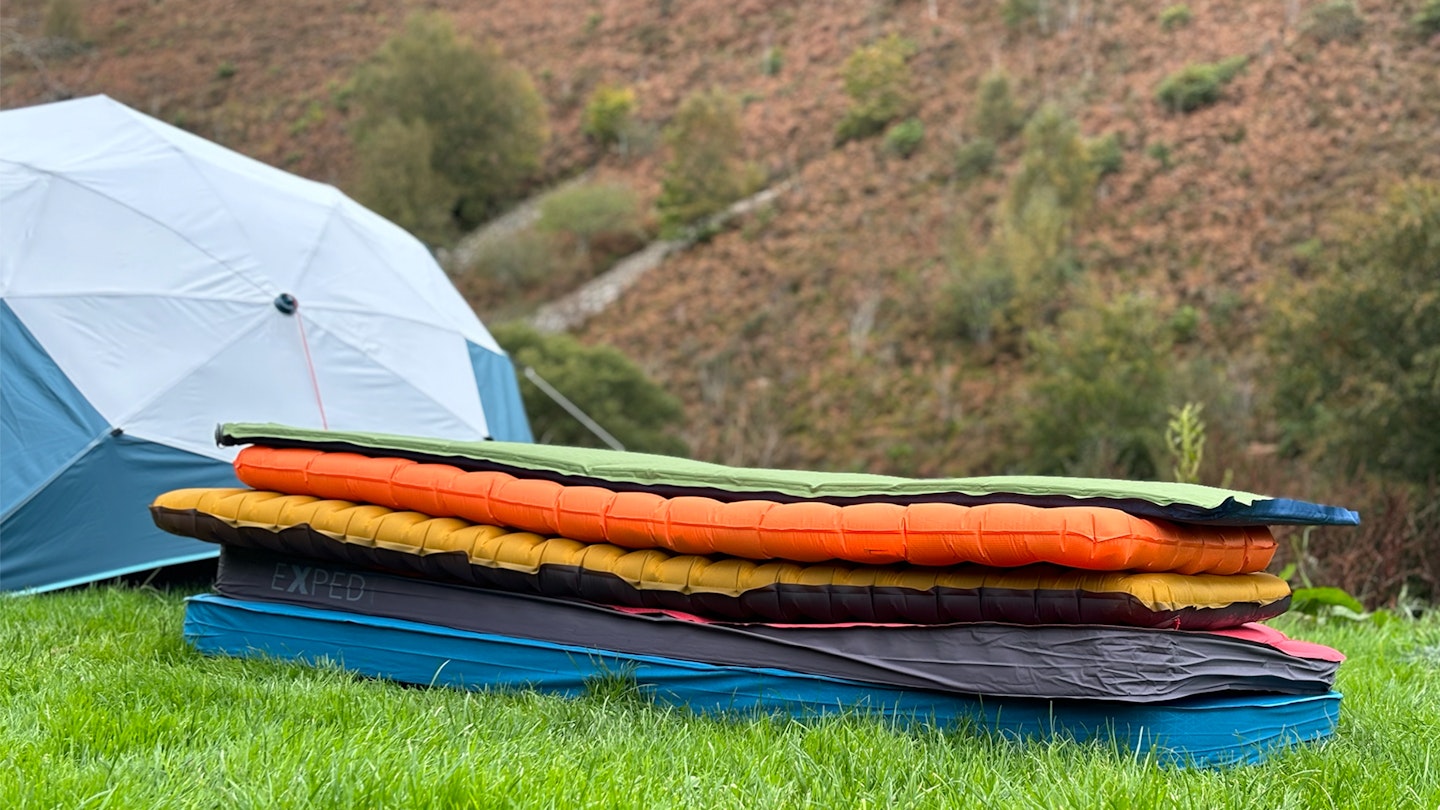
Our team is constantly hitting the hills, either for easy backcountry camping adventures or mad mountain bivvy expeditions. All of these outings demand the use of sleeping pads, so the ones we test always receive a huge dose of real-world use in order for us to reach our verdicts.
Those recommended here were mainly tested by Ben Weeks and James Forrest. Ben is our gear editor and has been with Trail magazine and LFTO for over 10 years. James has climbed every mountain in the UK and Ireland, and is a prolific backcountry camper.
When testing each sleeping pad, we focused on five key criteria. Comfort was a top priority – we looked at how well each pad contributed to a good night’s sleep. We also considered weight, portability, warmth and durability. Finally, we examined value by comparing overall performance to price.
Curious as to how we get products in for review? Read more about how we test here.
The best sleeping pads reviewed:
This may not be a 'budget' camping mattress, but we believe that the value provided by the smart engineering of the ZOOM UL by Big Agnes is second to none.
Where comfort powerhouses like the Exped Megamat or the Sea to Summit Comfort Deluxe are designed for long stays in basecamps or winter outposts, the Zoom UL Insulated camping mattress thrives in your hiking pack – on the move. The base model weighs just 14oz and packs down into an impressive 4x8in bundle. This level of portability isn't unheard of, but it's rarely combined with an equally high level of comfort.
The pad is 3.2in thick, but the outer chambers are bumped up to 3.5in to give a soft raised boarder that keeps you cradled in the centre. Our biggest gripe with air mattresses is how easy it is to slide off of one while sleeping; this seemingly subtle detail is what puts the Zoom UL miles ahead of the inflatable competition.
Additionally, we found the nylon ripstop pleasantly soft and the insulation was more than good enough for a blustery fall evening, though we wouldn't push it much further into the winter months.
We had an easy enough time blowing up the Zoom UL using the included inflation sack. If you've never used one before, picture a sturdy pillow case with one open end and a valve opposite which smoothly connects to the valve on the mat. You basically catch a load of air inside the sack and then roll it down to push the air into the mattress – it's quite fun to do, actually.
In all, this mattress is a dream for ultralight enthusiasts looking to catch some quality Z's. It takes some effort to set up every night, but we will definitely be bringing the Big Agnes Zoom UL on our next long-distance backpacking trip.
Pros
- Fantastically lightweight
- Packs down small very easily
- Raised edges provide extra comfort
- Sustainably constructed
Cons
- Not as wide as other choices
- Inflation can be a hassle if you're tired
| RRP: | $199.95 |
| Packed size: | 4x8in |
| R value: | 4.3 |
| Materials: | GRS certified post-consumer recycled nylon ripstop; TPU lamination; two layers of heat reflective film |
| Weight: | 14oz |
| Dimensions | 72x20x3.2in |
The biggest selling point of the Big Agnes Rapide SL Insulated mat is its price. It has the credentials and features to be closer to $200, so at $160 it represents excellent value for money.
The R-value of 4.8 is particularly impressive, out-performing more expensive alternatives. The Rapide is more than suited to 3-season adventuring and only just falls short of suitability for winter.
The Rapid SL’s rectangular profile (72x20in) adds roominess compared to mummy-tapered pads, and the 4.3in-thick vertical baffles deliver good levels of comfort, support, and stability.
Inflation and deflation are very straightforward too, via the included pump sack and high-tech dual valve. On our first attempt, it only took a few minutes and four loads of the pump sack to fully inflate.
The only real drawback of the Rapide SL is its weight. It clocks in at 1lb 5oz (including mat, pump sack, storage bag and repair kit), which is slightly heftier than its competitors.
The Big Agnes Rapide SL isn't the best option for fast and light adventures, but for general camping it's an excellent, budget-friendly all-rounder.
Read our Big Agnes Rapide SL Insulated review for more info.
Pros
- Great value for money
- Excellent R-value
- Impressive warmth
- Rectangular profile
- Thicker than average
- Efficient inflation-deflation system
- Good comfort and support
Cons
- Heavier than ideal
- Feels a tad narrow
- Difficult to fit back in storage bag
| RRP: | $146.89 (regular) |
| Dimensions (LxW): | 72x20in |
| Thickness: | 4.3in |
| Packed Size: | 9inx4in |
| Weight: | 1lb 5oz (including storage bag, pump sack and repair kit) |
| Material: | Ripstop nylon |
| R-Value: | 4.8 |
We've been using this sleeping mat for nearly a year and it's been tremendous. Near Zero is a reasonably small American outdoor brand that produces excellent value, high-performance kit that is designed to make backcountry camping and backpacking more accessible to more people.
Its insulated sleeping mat strikes a great balance between comfort and weight. It insulates well and is a good size (6ft 1in is slightly longer than other regular-sized mats).
We liked how compact it is too, despite not being the lightest mat we've tested. So far for us it's held up well and is showing no signs of wear or tear.
Read our full Near Zero backpacking bundle review.
Pros
- Impressive warmth-to-weight
- Quite durable
- Fantastic value
- Available in regular and wide
Cons
- Not as lightweight as some rivals
| RRP: | $99.50 |
| Weight: | 1lb 7oz (regular size) |
| Packed size: | 8x4in (regular size) |
| Material: | 20D nylon |
| R-value: | 3.7 |
| Dimensions: | 73x21.7x3.2in |
The Nemo Tensor Elite is a sleeping mat that's all about saving grams – it's a mighty small unit, not much bigger than a Coke can, weighing a featherlight 11.5 oz.
The R-value is 2.4, which isn't 3-season suitable, but it’s ideal for spring and summer adventures.
It delivers surprisingly impressive comfort, stable cushioning and well-executed features. The shape is a tapered mummy, which feels a tad narrow, thin and lacking in spaciousness, but ultimately does the job, and comfort levels are good courtesy of Nemo’s grid-like Apex baffles.
We particularly loved the inflation-deflation system. The pump sack is quick and efficient (only 2.5 sets to fully inflate) while the Laylow valve has a really clever micro-adjustment system for air pressure.
This isn't the most rugged option on the market, but it does come with Nemo’s Lifetime Warranty.
Overall, the Nemo Tensor Elite is an amazingly light sleeping mat with surprisingly impressive comfort levels, ideal for gram-saving ultralight enthusiasts.
Read our Nemo Tensor Elite review for more info.
Pros
- Amazingly lightweight
- Superb weight-saving innovation
- Good levels of comfort
- Incredibly compact
- Well-executed features
- Vortex Pump Sack is excellent
Cons
- Not that warm
- Only suitable for two-seasons
- Only 2.4 R-value
- Expensive
- Slightly narrow
- Not very spacious
| RRP: | $199.95 (short mummy), $229.95 (regular mummy) |
| Thickness: | 3.2in |
| Packed size: | 6x3.5in |
| Weight: | 11.5oz (including storage bag, pump sack and Velcro strap) |
| Material: | 10-denier Cordura nylon |
| R-Value: | 2.4 |
| Dimensions: | 72x20in (LxW) |
The Therm-a-Rest NeoLoft has an unrivaled level of comfort. This mat is so thick (4.7in), plush, warm (R-value of 4.7) and cosy it’s almost like a portable, camping version of the traditional airbed you might sleep on when visiting a friend’s house.
The downside of this is that it's very expensive and heavier than ideal (approx 2lbs, including storage bag, pump sack and repair kit).
The super-wide profile (26in) is certainly luxurious, but it might be too big for your tent. The packed-away size (10.6x5.5in) is chunkier than most, so this is a good option if space isn't a concern.
It achieves an R-value of 4.7, which is almost suitable for winter. It's more than enough for 3-season use, providing effective insulation from the ground.
One standout feature is the huge, 54-liter, seam-sealed pump sack, which fills up naturally, with very minimal effort required. There's absolutely no risk of moisture from breath getting into the pad, which can lead to issues with mould in the long run.
The Therm-a-Rest NeoLoft is a super-thick, ultra-plush sleeping mat with unrivaled levels of comfort – perfect for car camping, where space and weight isn't a concern.
Read our Therm-a-Rest NeoLoft review for more info.
Pros
- Unrivaled comfort levels
- Very wide sleeping surface
- Comfortable horizontal baffles
- Excellent warmth and 4.7 R-value
Cons
- Very heavy and chunky packed-away size
- Possibly too big for some one-person tents
- Expensive
- Pump sack to mat valve connection is a little fiddly
| RRP: | $239.95 |
| Dimensions (LxW): | 73x26in |
| Thickness: | 4.7in |
| Packed size: | 10.6x5.5in |
| Weight: | 2lb 1oz (including storage bag, pump sack and repair kit) |
| Material: | 50-denier and 75-denier polyester |
| R-Value: | 4.7 |
We put this pricey but technical sleeping mat to the test in the Cairngorms during winter. The Tensor Extreme Conditions boasts an impressive R-value of 8.5, making it one of the warmest backpacking mats available.
This warmth is achieved with four layers of Thermal Mirror metallised film within Nemo’s Apex baffle design, adhering to the ASTM F3340 standard for accuracy.
Comfort is impressive too with its 3.5in deep cushioning, which offers a relatively luxurious sleeping experience uncommon in lightweight mats. Despite its high R-value and thick cushioning, the Tensor EC weighs less than one and a half pounds, thanks to the lightweight Thermal Mirror film.
The mat is easy to inflate with the Vortex pump sack, taking fewer than four inflations, and deflates quickly with the updated Laylow valve. Its 40D nylon underside is puncture-resistant, while the 20D nylon top provides a soft, quiet sleep surface.
Read our full Nemo Tensor Extreme Conditions Mummy Sleeping Mat review.
Pros
- Well insulated
- Deep and cushioned
- Surprisingly lightweight
Cons
- Overkill for most users
| RRP: | $249.95 |
| Weight: | 1lb 5oz (regular size) |
| Packed size: | 10x4in |
| Material: | Bluesign-approved 40D nylon base and 20D top |
| R-value: | 8.5 |
| Dimensions: | 72x20x3.5in (regular size) |
The Sea to Summit Ether Light XR strikes an excellent balance between weight, durability, comfort and warmth.
An R-value of 4.1 is a solid rating for three-season use, with the internal ThermalCore insulation providing a toasty warmth boost.
Yet the mat is still lightweight and compact, clocking in at 1lb 3oz (regular version, including storage bag), and packing down to a compact cylinder sized approximately 8x4in, which is slightly smaller than many competing products.
The 30-denier and 40-denier nylon materials feel simultaneously lightweight yet reasonably robust, while the slightly-tapered mummy shape is refined for lightness.
There’s a quilted surface with a textured, criss-crossing, grid-like pattern called Air Sprung Cells. We found it very comfortable and cosy (although possibly a bit bobbly).
The 22in width and 4in thickness are particularly impressive, offering extra room and insulation than other brands’ offerings, but the 6ft length is pretty standard.
Inflation and deflation of the Ether Light XR are seamless too, courtesy of Sea to Summit’s high-tech XPRESS valve and Airstream Pump sack. It took us three full sacks of air and barely a minute to fully inflate – efficient stuff.
Overall, this is a top-tier mat for three-season, multi-day adventures.
Read our Sea to Summit Ether Light XR review for more info.
Pros
- Good R-value warmth
- Fully-featured
- Comfortable textured sleeping surface
- Durable materials
- Superb inflation system
- Excellent pump sack
- Compact
- Slightly larger dimensions than average
Cons
- Expensive
- Not as light as you’d expect for the price
- Sleeping surface may polarise opinion
| RRP: | $189 (small), $199 (regular), $219 (large) |
| Dimensions (LxW): | 72x22in |
| Thickness: | 4in |
| Packed size: | 8x4in |
| Weight: | 1lb 3oz (regular size, including storage bag, pump sack and repair kit) |
| Material: | 30-denier & 40-denier nylon |
| R-value: | 4.1 |
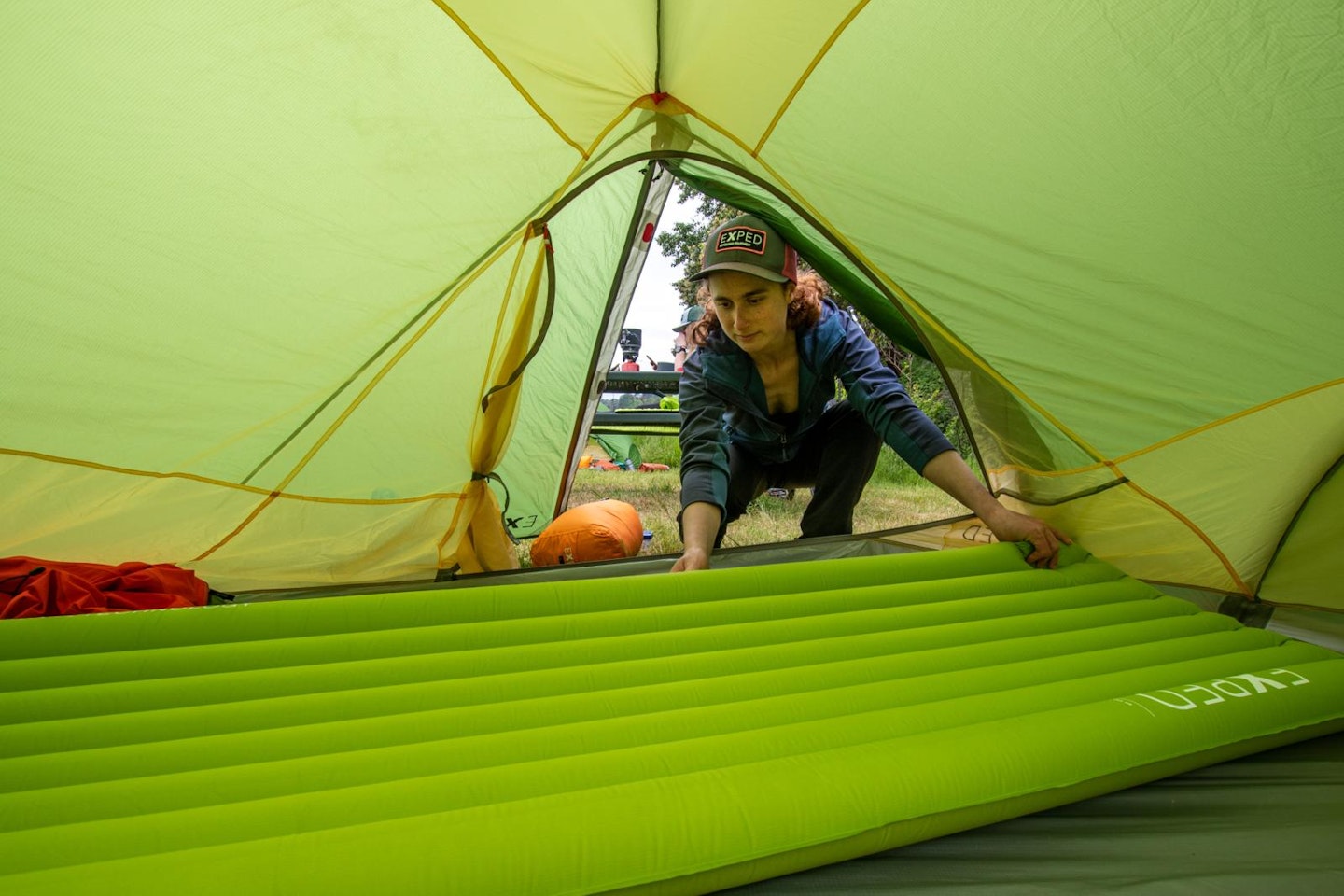
rei.com
The lightweight and packable Exped Ultra 3-season inflatable mat has impressed us for its performance and eco-credentials. It's become our go-to mat for most hiking trips.
It uses Bluesign-certified synthetic insulation and recycled 20D ripstop polyester fabric; the mat is even certified carbon neutral by myclimate.org.
The Ultra 3R is comprised of head-to-toe air chambers that provide a pliable, cushioned sleeping surface and – more importantly – excellent insulation from the ground. This is thanks to Exped's proprietary Symnat Texpedloft technology.
Is that a silly name? Perhaps. But this sleeping mat is seriously good at keeping you at a safe and comfortable temperature throughout chilly nights.
Pros
- Ultralight for long hikes
- Sustainable construction
- Pump bag included for easy inflation
- Available in several sizes and shapes
Cons
- Slightly delicate construction demands care
| RRP: | $139.95 |
| Weight: | 1lb (M size) |
| Packed size: | 9x4.3in (M size) |
| Material: | 20D recycled polyester w/ bluesign-approved 60 g/m² Texpedloft insulation |
| R-value: | 2.9 |
| Dimensions: | 72x20.5x2.8in (M size) |
What to look for in a sleeping pad

A good sleeping pad is essential for a comfortable night’s sleep in the great outdoors. Whether you're a casual campsite tourist, a hardcore backcountry camper or a long-distance thru-hiker, choosing the right pad can make a huge difference. This guide will help you understand the key factors to consider when purchasing a camping sleeping pad.
Type
Pads fall into one of three categories:
Foam mats are lightweight, cheaper and weather-resistant, but provide minimum cushioning and are bulky to carry. They are not very thick and, in terms of comfort, they are far inferior to inflatable mats. But their real benefit is that they are effectively indestructible.
While an inflatable mat can easily be punctured, a foam mat is utterly bombproof – hence they are often favored by long-distance hikers who need reliable, robust kit that will last for months on trail.
Self-inflating pads contain foam that expands and pulls in air when the valve is opened, thus self-inflating. This foam traps air, providing insulation and cushioning.
They come in various shapes and sizes to balance insulation, packability and comfort. Pros include minimal inflation effort, lightweight designs and an excellent warmth-to-weight ratio.

However, they tend to be heavier, bulkier, pricier and less cushioned than regular inflatable mats, and can be prone to punctures—though they are easily repaired. You perhaps need to take the term “self-inflating” with a pinch of salt too.
They don’t always inflate particularly quickly or fully and may require manual topping up.
Inflatable air-filled pads are like compact air beds for adventurers. Generally-speaking, they're the highest quality and most premium option for backcountry campers, offering the best balance between comfort, weight and all-round performance.
Inflatable air-filled pads require manual inflation, usually by blowing into the valve with your mouth or using a pump sack (a bag-like tool which fills with air, attaches to the valve, and then inflates the pad).
Compared to self-inflating pads, regular inflatable air-filled pads are lighter, more packable, thicker, and more comfortable, particularly because the firmness of your mat can be fine-tuned to your preference. However unless they have some kind of insulation inside, they can be cold.
Consequently, many pads feature insulation such as down or reflective materials to increase warmth. Other cons of inflatable air-filled pads include the time and effort required to inflate them, and the inherent risk of punctures.
R-value

R-value is a measure of thermal resistance; the higher the R-value, the warmer the mat. As of 2020, a new industry standard was adopted by most brands to standardise the measurement of R-value – the ASTM FF3340-18 R-value standard.
What is a good R-value? It all depends on the weather conditions and temperatures you’ll be camping in. To generalise, an R-value of 1-2 is considered suitable for summer camping in warmer weather, 2-4 is tailored for three-season use from spring to fall, and 4-6+ is designed for colder weather, with higher values suitable for sub-zero camping.
Weight
A sleeping pad will spend more time being carried in a pack than being slept on, so lighter is better, but toughness can diminish with weight, so there's a balance to be found.
We’d consider a weight of between 14 and 21 ounces (including accessories such as storage bag and pump sack) as a good target to aim for. Anything under 14oz would be classed as ultralight; 21oz+ is starting to get a little heavy, perhaps.
Mat size, shape, length and thickness
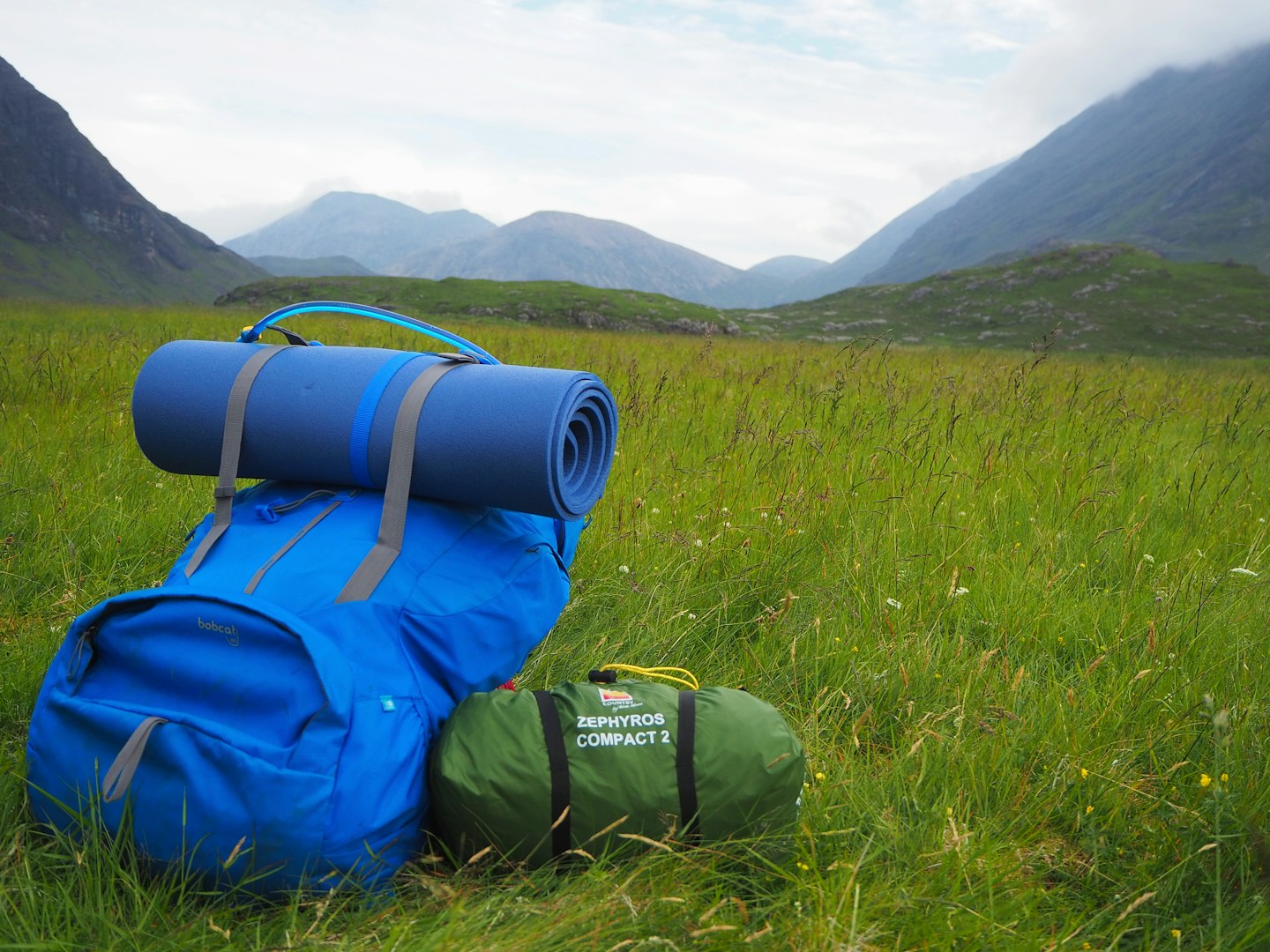
Pads from reputable brands often come in different lengths and widths, meaning you can choose one that best suits your body shape. Most campers will be fine with the regular size, but taller or plus-sized campers may prefer a long version, wide version, or long-wide version. Anyone particularly short in height may also be able to save weight by selecting a ¾-length mat.
In terms of shape, pads tend to come in two main designs: rectangular or mummy. Rectangular pads provide a bigger overall sleeping surface area, adding versatility and comfort for those who toss and turn at night – but they are usually heavier and bulkier.
Most backcountry campers, therefore, tend to opt for a mummy-style pad, which is tapered towards the foot end to provide a better balance between weight and comfort.
Not all pads come with the same thickness when inflated. The thicker a pad, the more comfortable, warm and insulating it will be; but it’ll be also be a bit heavier and bulkier.
Remember to check a pad’s inflated thickness before purchasing. Side-sleepers will tend to benefit most from a thicker mat, which will help prevent the sleeping surface collapsing inwards under your bodyweight.
Sleeping surface design

Above anything else, this might be the most important factor in terms of sleeping pad comfort. It’s a very personal, subjective thing too – will you prefer the feel of vertical baffles or horizontal ones, or will a quilted, textured surface suit you better?
Therefore, it’s always best to try before you buy in a shop, if you can. Horizontal baffles, which run at 90-degrees to the mat length, are billed as providing a stable sleeping surface with good weight distribution.
Vertical baffles, which run parallel to the mat length, create long air channels and, according to some, work better for side sleepers. Alternatively some campers favor a quilted surface, which has a contoured, grid-like texture rather than baffles. But, ultimately, it all comes down to personal preference.
Packed size
Pads with smaller packed sizes are easier to fit into a rucksack along with your other camping gear. Warmer pads tend to be bulkier, so really compact pads are best saved for summer.
Durability and materials
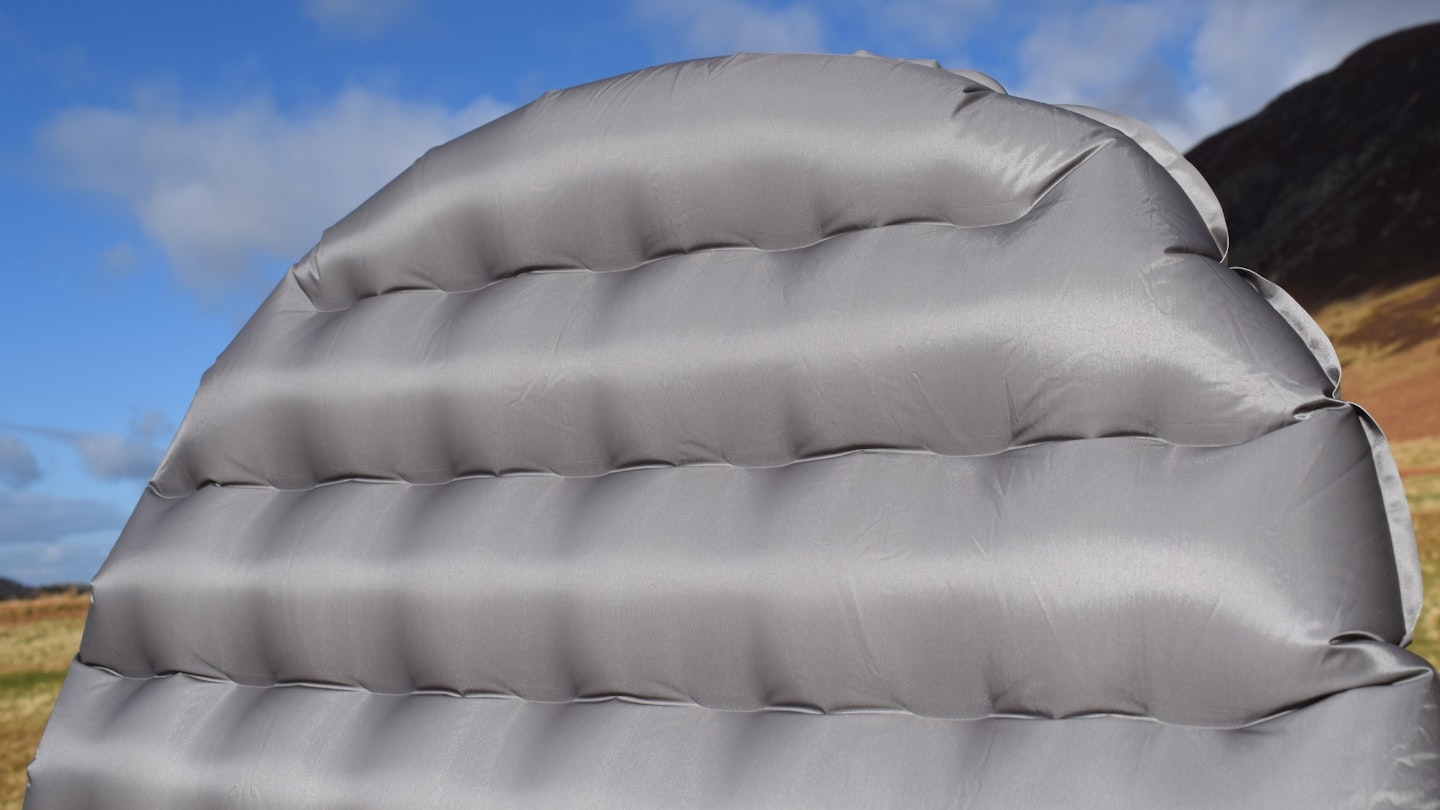
The type, cut and thickness of the materials used in a sleeping pad will affect how durable, tough and sturdy it is in the long-term. Nylon and polyester are common – and it’s also worth checking the denier rating of the materials used. The higher the denier, the more rugged it’ll be.
Repairability
Self-inflating and inflatable pads become unusable if punctured, so usually come with some kind of repair kit. Foam mats are far more resilient and continue to offer insulation even when wet.
Inflation, deflation, pump sacks and valves
Some old school sleeping pads are inflated by mouth, like a balloon, meaning you literally have to place your lips over the inflation valve and blow in.
But this method is largely out-dated now, partly for hygiene reasons and partly because this approach adds moisture to the inside of the pad, which can cause internal damage and deterioration over time.
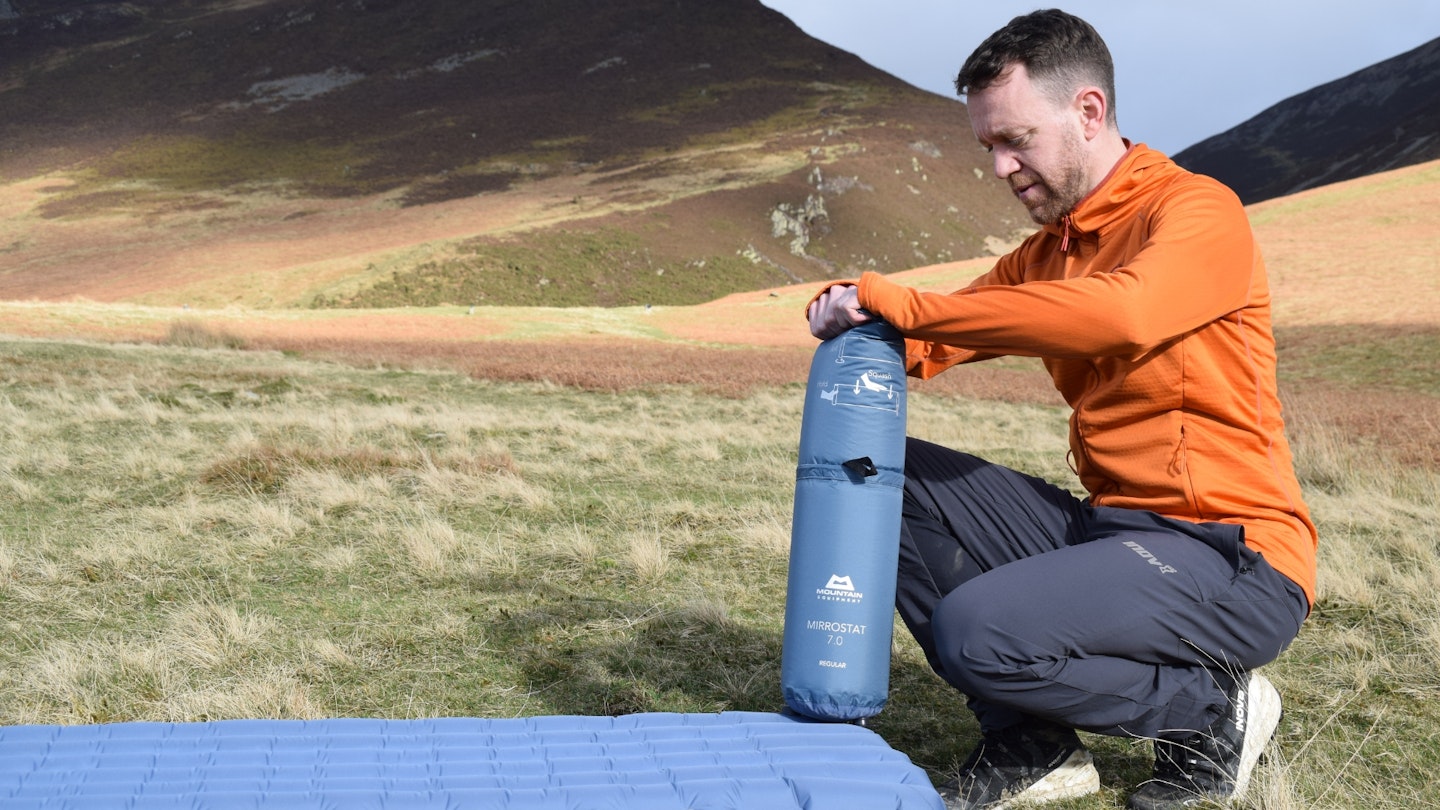
These days most pads come with a pump sack – a bespoke bag with an integrated hose and nozzle that is used to inflate your pad. The pump sack looks a little like a dry bag or sleeping bag storage bag, but has a specialised nozzle at its base.
This nozzle attaches to the valve of your sleeping pad. The pump sack then fills with air, either by gently blowing into it from a distance or angling it towards the wind so that it fills up naturally. You can then close the sack and roll or compress it downwards, thus forcing air through the nozzle to inflate your sleeping pad. It’s an efficient, convenient system.
In terms of the inflation-deflation valves on your sleeping pad, it’s best to opt for a pad with a high-tech, modern valve. These valves have a clever design, usually with two caps layered over one hole. When you open the first cap, the valve is one-way only, meaning no air can flow outwards, but air can flow inwards.
This ensures you can efficiently inflate the mat without any risk of deflation or leakage via air flowing outwards. After your camp, opening both caps will enable the pad to deflate. Some pad also have an additional micro-adjustment system, which enables you to fine-tune the air pressure to your preference.
About the author
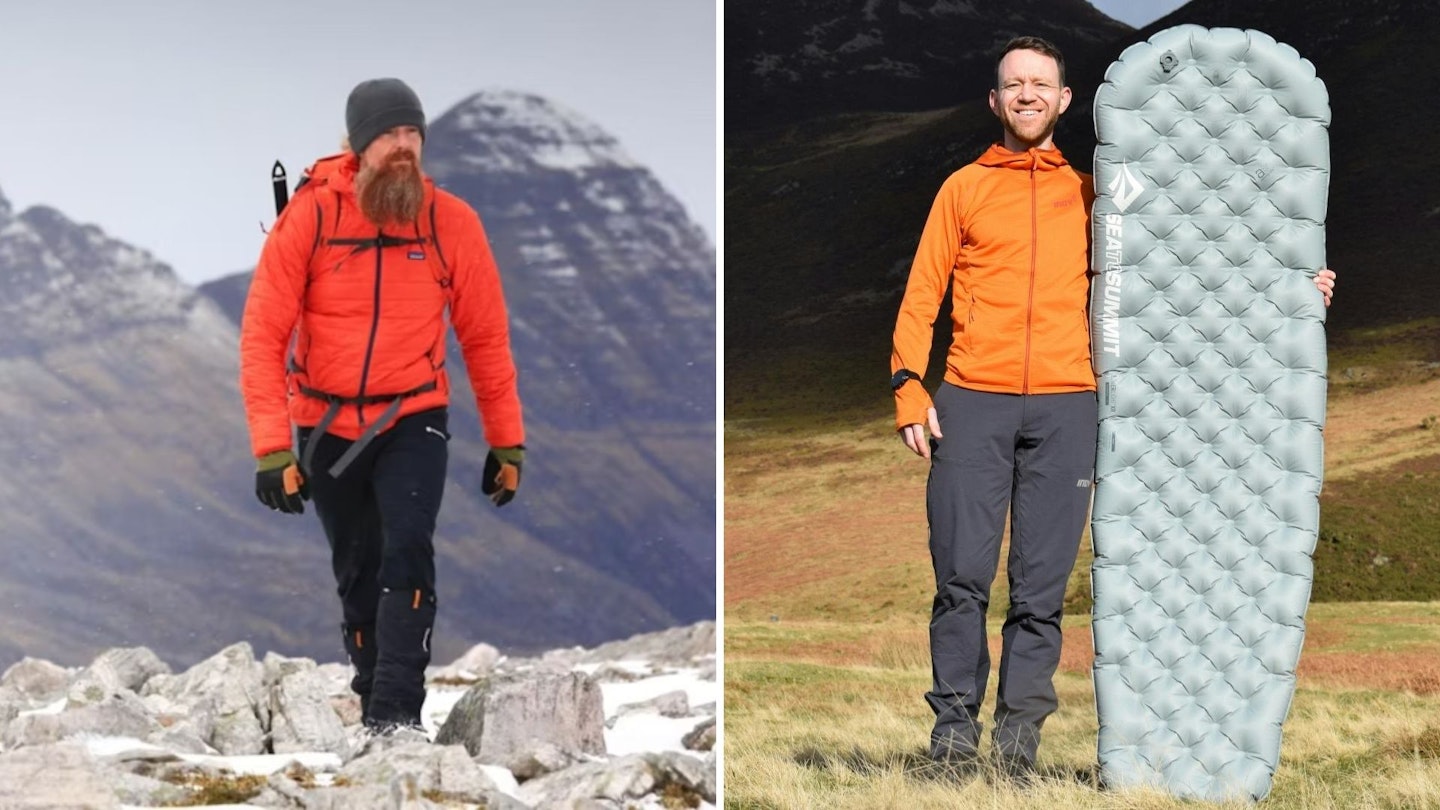
Ben Weeks has been with Trail for over 10 years and is our main point of contact for a lot of our gear reviews. As well as being a hugely talented writer and photographer, Ben is also a qualified Mountain Leader and climbing instructor.
Along with walking, scrambling and wild camping, he loves gnarly winter climbing routes so is a master at putting cold weather kit through its paces.
James Forrest is an experienced gear tester and widely respected outdoor journalist. Among his many accomplishments, James climbed all 1,001 mountains in the UK and Ireland in just two years, camping wild for over 100 nights during the challenge.

